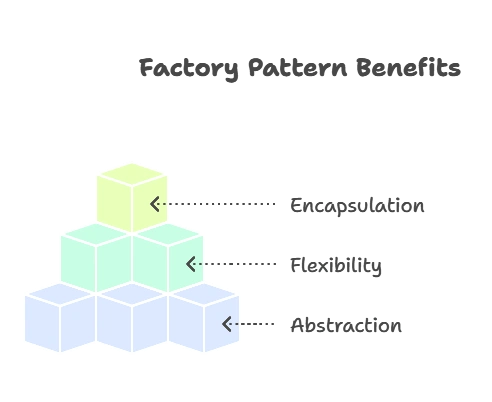Factory Pattern
Factory patterns are essential tools in the arsenal of software design, offering a structured approach to object creation. They abstract the process of creating objects, providing flexibility and scalability in application development. In Python, Factory patterns play a crucial role in promoting code abstraction and encapsulation, fostering modular and maintainable codebases.
Introduction to Factory Pattern
Understanding Factory Pattern
The Factory pattern is a creational design pattern that provides an interface for creating objects in a superclass but allows subclasses to alter the type of objects that will be created. It promotes loose coupling between the client code and the created objects, enhancing flexibility and scalability.
Importance of Factory Pattern
Factory patterns offer several advantages:
- Abstraction: They abstract the object creation process, allowing clients to create objects without needing to know the specific class implementations.
- Flexibility: They enable easy addition or modification of object creation logic without modifying client code.
- Encapsulation: They encapsulate object creation, promoting code maintainability and reducing dependencies.

Basic Factory Implementation
Simple Factory Example
A basic implementation of the Factory pattern involves defining a factory class with a method for creating objects based on certain parameters.
class ShapeFactory:
def create_shape(self, shape_type):
if shape_type == "circle":
return Circle()
elif shape_type == "square":
return Square()
elif shape_type == "rectangle":
return Rectangle()
# Usage
factory = ShapeFactory()
circle = factory.create_shape("circle")
square = factory.create_shape("square")
rectangle = factory.create_shape("rectangle")
print(circle.draw()) # Output: Drawing a circle
print(square.draw()) # Output: Drawing a square
print(rectangle.draw()) # Output: Drawing a rectangle
Explanation:
- The
ShapeFactoryclass encapsulates the creation logic for various shapes. - The
create_shape()method takes ashape_typeparameter and returns an instance of the corresponding shape class. - Clients can create shapes using the factory without needing to know the specifics of shape creation.
Advanced Factory Implementations
Abstract Factory Pattern
The Abstract Factory pattern provides an interface for creating families of related or dependent objects without specifying their concrete classes. It promotes consistency among the created objects and ensures that they are compatible with each other.
class GUIFactory:
def create_button(self):
pass
def create_checkbox(self):
pass
class WinFactory(GUIFactory):
def create_button(self):
return WinButton()
def create_checkbox(self):
return WinCheckbox()
class MacFactory(GUIFactory):
def create_button(self):
return MacButton()
def create_checkbox(self):
return MacCheckbox()
# Usage
win_factory = WinFactory()
mac_factory = MacFactory()
win_button = win_factory.create_button()
mac_button = mac_factory.create_button()
win_checkbox = win_factory.create_checkbox()
mac_checkbox = mac_factory.create_checkbox()
Explanation:
- The
GUIFactoryinterface declares methods for creating buttons and checkboxes. - Concrete factory classes (
WinFactoryandMacFactory) implement theGUIFactoryinterface and provide platform-specific implementations for creating buttons and checkboxes. - Clients can create platform-specific UI components using the appropriate factory, ensuring compatibility and consistency among the created objects.
In the above topic, we've explored the Factory pattern in Python, from basic implementations to advanced techniques like the Abstract Factory pattern. Factory patterns offer a flexible and scalable approach to object creation, promoting code abstraction, encapsulation, and maintainability. By mastering Factory patterns, Python developers can create modular, reusable, and platform-independent code, enhancing the flexibility and robustness of their applications. Happy coding! ❤️
